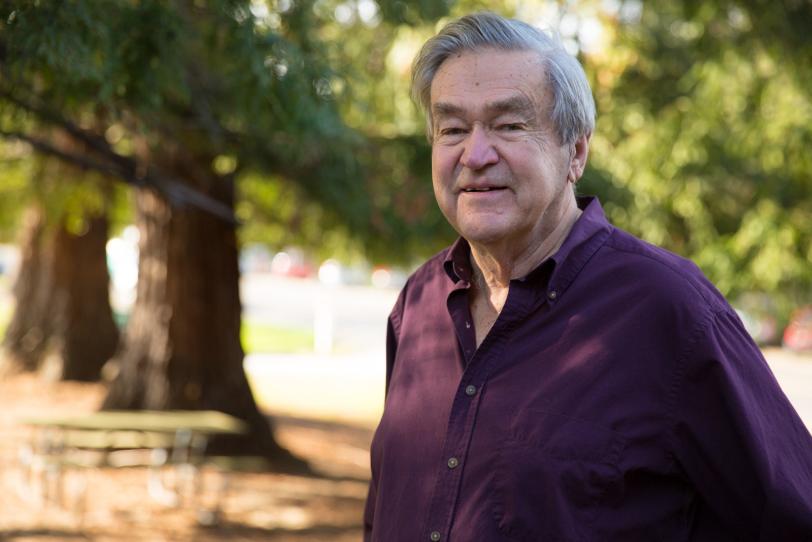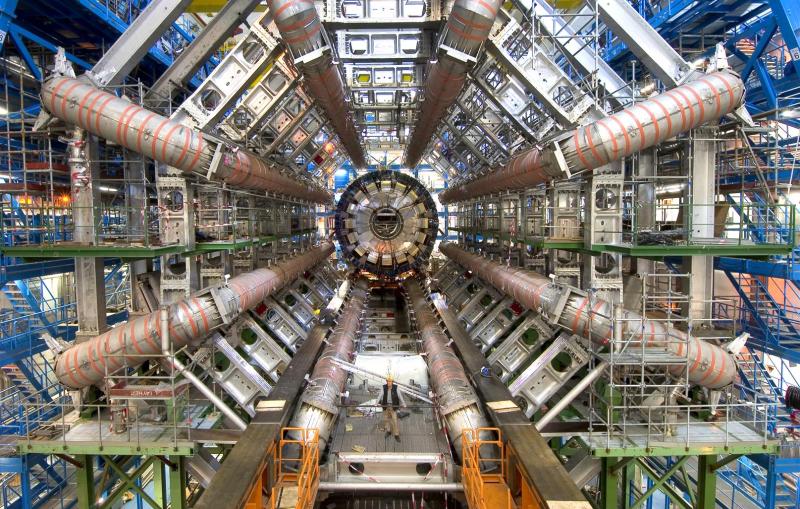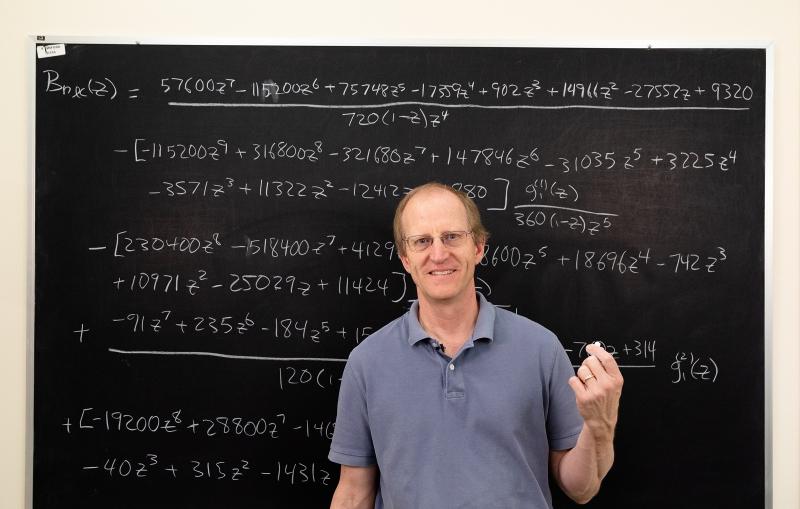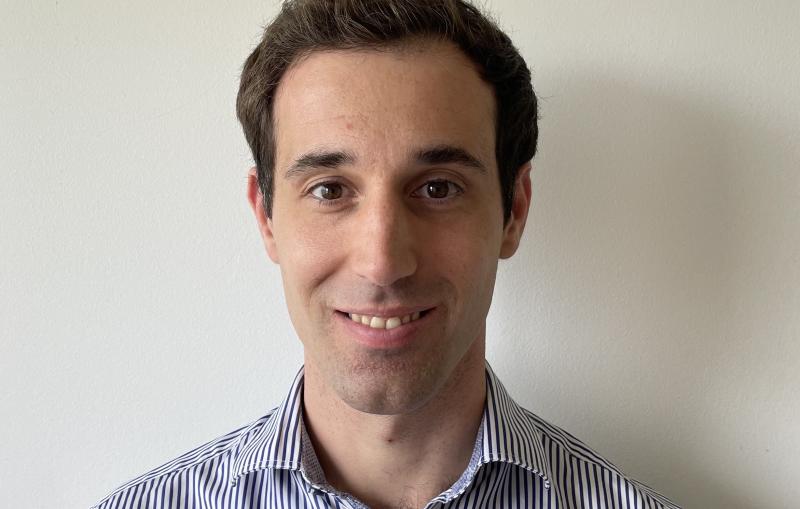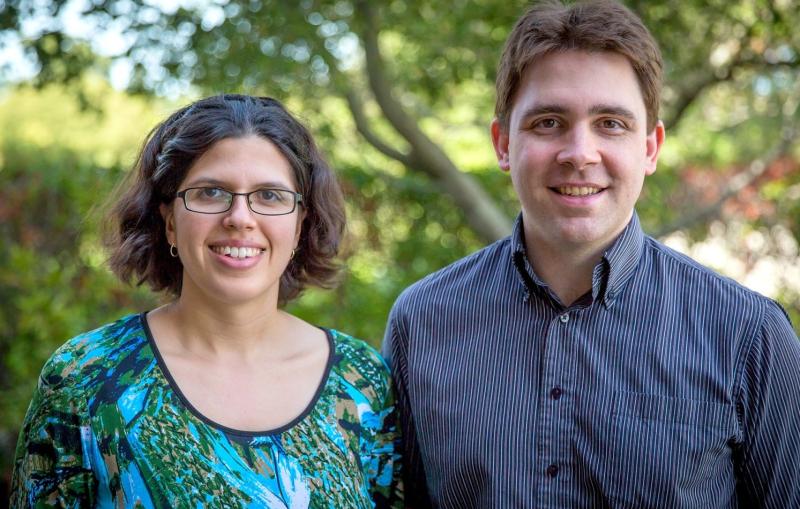SLAC Theoretical Physicist James Bjorken to Share 2017 Wilson Prize
The Prize Honors Work that Helped Sharpen the Focus of Particle Beams at a Wide Variety of Accelerators
Theoretical physicist James D. “BJ” Bjorken, a professor emeritus at Stanford University and the Department of Energy’s SLAC National Accelerator Laboratory, will share the 2017 Robert R. Wilson Prize for Achievement in the Physics of Particle Accelerators for groundbreaking theoretical work that helped researchers understand and cope with an important constraint on the intensity and focus of particle beams in accelerators.
The annual prize was awarded by the American Physical Society “for the detailed, theoretical description of intrabeam scattering, which has empowered major discoveries in a broad range of disciplines by a wide variety of accelerators, including hadron colliders, damping rings/linear colliders, and low emittance synchrotron light sources.”
Bjorken shares the award with theoretical physicists Sekazi Mtingwa, now a principal partner with Triangle Science, Education & Economic Development in North Carolina, and Anton Piwinski of DESY in Germany.
Bjorken will be the third SLAC researcher to receive the prize, which was awarded to SLAC’s John Galayda in 2013 and John Seeman in 2004.
“I am delighted with the award of the prestigious Wilson Prize to BJ, Sekazi Mtingwa and Anton Piwinski,” said Lia Merminga, associate lab director for SLAC’s Accelerator Directorate. “Their seminal understanding of intrabeam scattering not only has been fundamentally important to accelerator physics, but it has also enabled a breadth of accelerator-based scientific discoveries.”
From Particles to Accelerators
A theoretical particle physicist, Bjorken joined the Stanford faculty in 1959 and came to SLAC when the lab was founded in1962. In the 1970s he got interested in accelerator physics – the science of how particle accelerators work – and in 1979 he moved to Fermi National Accelerator Laboratory, where he set out to learn more from the people who ran the Fermilab accelerators.
“Theoretical accelerator physics is not only very important and very practical but also extremely beautiful, and it’s something I’m very happy I took the time to learn, even though today I’m still an amateur when it comes to accelerator science,” Bjorken said. “It was a huge pleasure and a privilege to find out I’m a prize recipient in this field. It’s downright astonishing, and it means a lot to me.”
One of the many problems that accelerator operators have to overcome is intrabeam scattering – the tendency of protons or electrons that are circulating in a beam to repel each other, collide and scatter. This spreads the beam out and reduces its focus and intensity. Discovered in the 1960s, intrabeam scattering is a persistent headache at all sorts of accelerators, from rings that circulate electrons to generate X-ray light to big particle colliders like the Large Hadron Collider in Europe. To counter this effect, researchers need to thoroughly understand it. That’s where theory comes in.
Research Milestones
In 1974, Piwinski, who was working at DESY, created the first fairly complete model of intrabeam scattering in accelerators and storage rings, and followed this with more detailed descriptions, according to a nomination letter submitted by Herman Winick, a research professor emeritus at Stanford University and deputy director emeritus of SLAC’s Stanford Synchrotron Radiation Lightsource.
In the early 1980s, Bjorken and Mtingwa, who was then a researcher at Fermilab, recognized the importance of this effect at Fermilab’s Tevatron collider and published a paper that, along with Piwinski’s work, “sets a milestone in accelerator physics,” Winick wrote. “Their discussion on properties and invariants is to be considered a masterpiece, which deepened our understanding.”
Winick added that hundreds of papers on intrabeam scattering have been published since then, all based on the seminal models developed by these three scientists, who are also well known for other important achievements in physics and in society.
“This award is very well deserved, and especially extraordinary since the seminal contributions it recognizes were tangential to BJ’s original area of expertise,” said JoAnne Hewett, a professor at SLAC and Stanford and associate director of SLAC’s Science Directorate. “The work reveals BJ’s deep understanding of quantum field theory and the interaction of particles."
Achievements in Physics and in Society
Bjorken returned to SLAC and to his work in theoretical particle physics in 1989. He has received a number of honors, including the American Physical Society’s Dannie Heinemann Prize in Mathematical Physics, the Department of Energy’s Ernest Orlando Lawrence Medal and the Dirac Medal from the International Center for Theoretical Physics. Last year he shared two more major awards in physics – the 2015 Wolf Prize in Physics and the 2015 High Energy and Particle Physics Prize of the European Physical Society.
Mtingwa, who is the first African-American scientist to receive a prize from an APS Division, pursues research in accelerator and high-energy physics, as well as nuclear energy policy. He served as director of SLAC’s Energy Research Undergraduate Laboratory Fellowship Program in 2002, and previously served on the DOE Nuclear Energy Advisory Committee’s Nuclear Fuel Cycle R&D Subcommittee.
For his work in nuclear energy policy, Mtingwa received the American Nuclear Society’s Distinguished Service Award in 2015. He was co-founder of the African Laser Centre, a nonprofit based in South Africa that promotes laser science in Africa. As president of INCREASE, the Interdisciplinary Consortium for Research and Educational Access in Science and Engineering, he played an important role in organizing two workshops at SLAC for faculty and students from minority-serving institutions. Most recently, he has remained in the field of theoretical accelerator physics and has been a major player in the effort to build the first X-ray light source facility in Africa.
“When I look back, it is clear that Bjorken and I had no idea that our work would become so important for so many fields," Mtingwa said. "We had a small objective: to understand the effects of intrabeam scattering on the antiprotons in the accelerator called the Accumulator. Receiving the Wilson Prize has been extremely exciting for my family and me.”
For questions or comments, contact the SLAC Office of Communications at communications@slac.stanford.edu.
SLAC is a multi-program laboratory exploring frontier questions in photon science, astrophysics, particle physics and accelerator research. Located in Menlo Park, Calif., SLAC is operated by Stanford University for the U.S. Department of Energy's Office of Science.
SLAC National Accelerator Laboratory is supported by the Office of Science of the U.S. Department of Energy. The Office of Science is the single largest supporter of basic research in the physical sciences in the United States, and is working to address some of the most pressing challenges of our time. For more information, please visit science.energy.gov.
